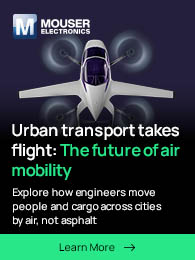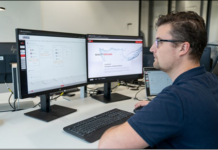Sustainability has emerged as a major concern for all, and healthcare is not an exception. Hospitals are open 24/7 and need resources such as water, electricity and other medical equipment. Such buildings consume a large amount of energy. Introducing energy-saving measures and renewable energy sources lowers many operational expenses and assists in developing a healthier environment.
The medical industry is facing a lot of pressure to minimise its environmental impact. In an effort to contribute to sustainability, medical campuses and hospitals are also putting up EV charging stations to encourage green mobility, as the adoption of electric vehicles has been on the rise over the past few years. As per Pristine Market Insights, electric vehicles will account for about 70% of global sales by 2030. This is also helping the hospital staff, patients and also the community at large.
Need for Green Mobility in Healthcare
Healthcare centres hold a special role in pioneering environmental stewardship by adopting green mobility technologies like EV charging facilities. As significant energy users, hospitals can easily decrease their carbon burden and enhance public health results by supporting electric vehicles. This emphasis on cleaner air and sustainability aligns with their basic mission of encouraging health and wellness. The EV charging stations market is expected to rise significantly due to these installations.
EV charging station investment also makes hospitals progressive pioneers in their communities. By optimising patient and employee convenience, tapping into government incentives, and promoting sustainability objectives, hospitals prove their commitment to corporate social responsibility while going into the future of infrastructure in a fast-electrifying world.
EV Charging Stations Installation Advantages:
- Decreasing Environmental Footprint
By installing EV chargers particularly if coupled with clean energy resources such as solar or wind power, they can reduce carbon emissions and help make the planet a better place to live. This action is fully in line with their central purpose of fostering well-being, demonstrating that the organization cares about people and the earth as much as it does about them.
- Attracting Patients and Employees
People are very concerned about sustainability in recent times, and when the hospital provides EV charging, it indicates that they are progressive and socially responsible. This can get eco-conscious patients to opt for their institution and bring in employees who care about green values at work. Also, it provides genuine convenience for visitors by demonstrating attention to detail in the total patient and guest experience.
- Enhancing the Patient Experience
Healthcare is stressful, particularly in the case of emergencies or extended treatment visits. Providing EV charging facilities is a minor but substantial gesture to minimise one’s worry about finding a spot to charge. Patients and their families value thoughtful, contemporary conveniences that streamline their visit. It’s another gesture to illustrate that care is more than clinical services.
- Encouraging and Uplifting Healthcare Professionals
Staff members, from nurses to support staff, feel appreciated when their workplace supports their lifestyle. EV charging at work saves time and stress from searching for public charging. It’s also a fantastic benefit that may attract and retain hospital talent, particularly in a competitive job market where tiny benefits equal big ones.
- Financial Benefits
Putting up EV charging stations does involve an initial investment, but hospitals gain benefits in numerous ways. They can charge for public usage, reducing operating expenses while generating revenue. If the hospital operates EVs within its own fleet, fuel and maintenance costs decrease. And often, there are available grants and rebates that offset installation fees, so it is a financially sound decision in the long term.
- Educating and Engaging the Community
Hospitals are institutions that are believed in, and thus, the best environmental leaders. By organising EV events or providing workshops, they can educate the public on clean transportation. It not only promotes sustainability but also enhances the hospital as a community champion for a cleaner future, both within and outside the institution.
Steps to Install EV Charging Stations at Hospitals:
- Evaluate Demand
Survey staff, patients, and visitors to project current and future use of EVs. Use the information to decide on the number of chargers to install and the types best suited to meet user demand.
- Choose the Proper Location
Select convenient locations like parking garages, visitor lots, or employee parking areas. Be sure locations do not compromise emergency access or hospital operations.
- Select the Proper Type of Charger
Level 1: Slow basic charging (120V) geared for extended parking.
Level 2: Faster appropriate for most hospital campuses with moderate turnover.
Level 3: Fast speed charging for high-demand and emergency use.
Hospitals might opt for a combination depending on use profiles.
- Collaborate with an EV Charging Provider
Partner with proven providers like Tesla, ChargePoint for ready-to-use applications. Providers take care of services like installation, software management, user billing, and maintenance.
- Confirm Compliance with Regulations
The installation should comply with the local building standards like fire safety provisions and environmental requirements. Confirm whether all the rules and regulations, under the guidance of an expert to prevent further delays and legal complications.
Future of EV Charging Stations in Healthcare and Medical Campuses
The future of EV charging in the healthcare sector will be influenced by innovative technologies and strategic alignment with hospital operations, which include offerings such as ultra-fast and wireless charging, combined with intelligent energy management systems, that will maximise grid usage and lower energy expenditure.
Vehicles can utilise vehicle-to-grid (V2G) and vehicle-to-building (V2B) functions, utilising EV fleets as mobile storage during periods of peak demand or outages, improving energy resilience. Seamless plug-in charging systems (ISO 15118) and application-based interfaces will enhance convenience to users with automated billing and real-time reporting. With changing policies and incentives, early investment by healthcare providers will enable them to better address regulatory changes, green objectives, and increased EV demand among staff, patients, and emergency fleets.
Conclusion
Placing EV charging stations at hospitals makes life better, which is the ultimate mission of healthcare. It decreases pollution and demonstrates that hospitals are becoming more concerned with new concepts, respecting the earth, and setting an example. As electric cars are increasingly used by more patients, employees, and ambulances, having charging stations is not only a nice bonus, but it’s a smart and essential move. Hospitals that act now will be well-equipped for future demands, emerging regulations, and recruiting individuals who have an environmental conscience. This also indicates they have an environmental conscience, not only for patients but for the entire planet.

















